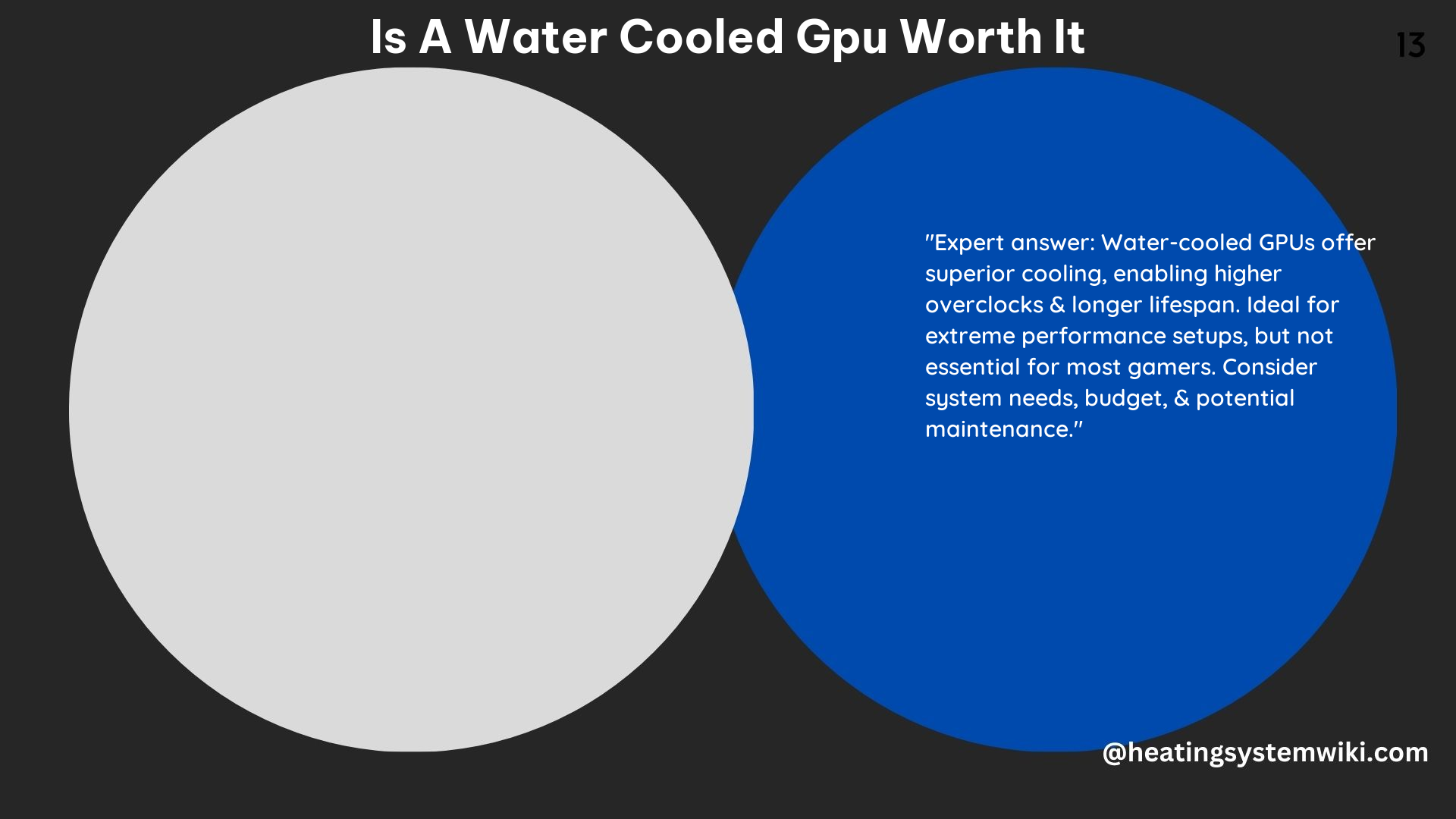A water-cooled GPU can offer several advantages over an air-cooled GPU, including better cooling performance, quieter operation, and the ability to overclock more easily. However, these benefits come at a higher cost and with some potential risks, such as leaks and increased complexity.
Cooling Performance
Water-cooled GPUs are generally more effective at cooling the GPU than air-cooled GPUs. This is because water has a higher heat capacity than air, allowing it to absorb and dissipate more heat. Additionally, water cooling solutions can be designed with larger heat exchangers and more surface area than air cooling solutions, further improving their cooling performance.
- Water has a specific heat capacity of 4.182 J/g°C, while air has a specific heat capacity of only 1.005 J/g°C. This means that water can absorb and transfer more heat per unit of mass compared to air.
- Water cooling solutions can utilize larger radiators and fans, which can dissipate heat more efficiently than the smaller heatsinks and fans found in air-cooled GPUs.
- Water cooling solutions can also be designed with custom flow paths and optimized for the specific GPU being cooled, further improving their thermal performance.
Overclocking Potential

Water-cooled GPUs can also be overclocked more easily than air-cooled GPUs. This is because water cooling solutions can handle higher thermal loads than air cooling solutions, allowing the GPU to run at higher clock speeds for longer periods of time without throttling.
- Water cooling solutions can typically dissipate up to 500W of heat, while air cooling solutions are generally limited to around 300W.
- This higher thermal capacity allows water-cooled GPUs to maintain higher clock speeds for longer periods of time before reaching their thermal limits.
- Overclocking a GPU can increase its performance by 10-20% or more, depending on the specific GPU and cooling solution.
Noise Levels
Water-cooled GPUs can also operate more quietly than air-cooled GPUs. This is because the larger radiators and fans used in water cooling solutions can run at lower speeds to achieve the same level of cooling, resulting in lower noise levels.
- Air-cooled GPUs typically rely on small, high-speed fans to dissipate heat, which can produce significant noise levels, especially under heavy load.
- Water cooling solutions can use larger, slower-spinning fans that generate less noise, or even passive radiators that require no fans at all.
- The noise level of a water-cooled GPU can be as low as 20-30 dBA, compared to 40-50 dBA for a typical air-cooled GPU under load.
Potential Downsides
While water-cooled GPUs offer several advantages, they also have some potential downsides:
- Cost: Water-cooled GPUs are typically more expensive than their air-cooled counterparts, with the cost of the cooling solution and installation adding to the overall price.
- Complexity: Water cooling systems introduce additional components and potential points of failure, such as pumps, tubing, and fittings, which can increase the complexity of the system and require more maintenance.
- Leaks: There is a risk of leaks in a water cooling system, which can potentially damage other components in the system and even the GPU itself.
DIY Water Cooling
Building a custom water-cooled system can be a rewarding but challenging project. It requires careful planning, selection of compatible components, and attention to detail during assembly. Additionally, it is important to regularly maintain and monitor the system to ensure that it is functioning properly and to prevent any potential issues.
- Selecting the right components, such as the GPU water block, radiator, pump, and tubing, is crucial to ensure compatibility and optimal performance.
- Proper installation and routing of the tubing is important to prevent leaks and ensure efficient heat transfer.
- Regular maintenance, such as checking for leaks, cleaning the system, and replacing worn components, is necessary to keep the water cooling system functioning properly.
In conclusion, a water-cooled GPU can offer better cooling performance, quieter operation, and the ability to overclock more easily than an air-cooled GPU. However, these benefits come at a higher cost and with some potential risks. Whether or not a water-cooled GPU is worth it depends on your specific needs, budget, and willingness to take on the added complexity and potential risks.
References:
